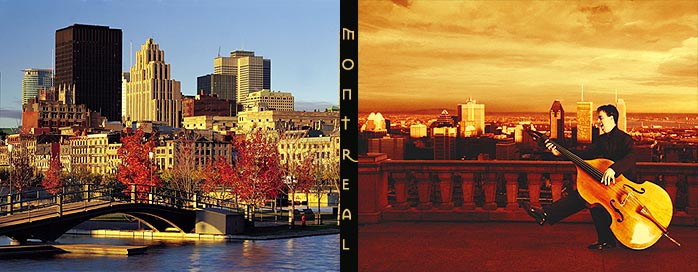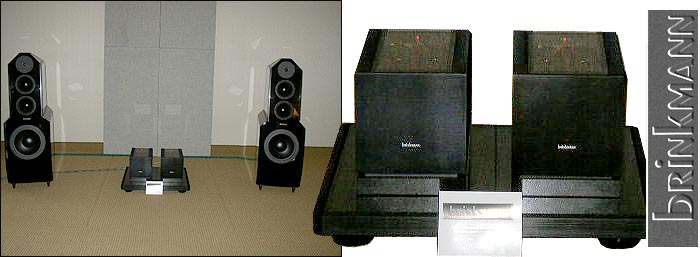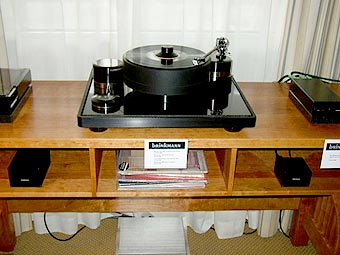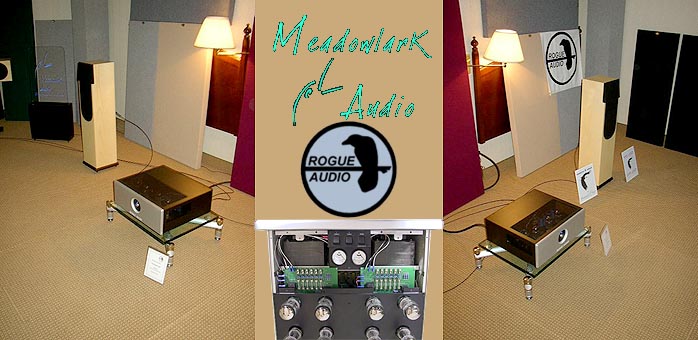 |
|||||||||||||
|
Random thoughts & observations: Part 1
|
|||||||||||||
 |
|||||||||||||
Many show reports have come and gone over the decades. While I have usually enjoyed reading them to see what was new in high quality audio, I have never written one before. Since this is my virginal effort, I’ve reflected on various approaches only to conclude that there is virtually no inventive, novel or fascinating way to do this. As a result, I have resorted to a ‘stream of consciousness’ approach which means that it may feel more random and vague than what others usually do. I hope this is fine with you - it is with me. I am compelled to note that this won’t be, in any way, a comprehensive or encyclopedic report. Those products which held my attention based on either an interesting design or their enduring presence on the audio scene will be noted here; there's just no way to cover it all. Please note that my colleague Paul Candy is providing his views that should reflect an alternate perspective and range of coverage. Hopefully, this will somehow dovetail in the end. |
|||||||||||||
 |
|||||||||||||
|
All city photos by Stéphan Poulin - Tourisme Montréal
|
|||||||||||||
I have attended lots of audio shows and usually focused on the high end Stereophile events either in New York or California as my main exposure to these sorts of gatherings. This 2004 FS&I show in Montreal was a first-time visit for me, and I am happy to say, will not likely be my last. The festival is well organized, housed at two downtown Montreal hotels directly across the street from each other and has a calmness and civility about it that is highly welcomed. Yes, most exhibitors do use conventional hotel guest rooms or suites for their demonstrations and that is a big factor in how things sound. A few demos do take place in function rooms ranging from salons to small ballrooms, but most are in smallish, standard hotel rooms which have been reconfigured by removing most of the usual guest furniture and such. I mention this primarily because, as most of you know, the biggest variable in any audio installation is typically the room itself. While you and I may take weeks, months or years to optimize how our equipment interfaces with our room, these exhibitors may have a day or less to do so. That can be a major frustration. It became clear that many of the demo rooms were sonically compromised at best. A few presenters made very concerted efforts to treat the spaces while most did their best without excessive fussing. You can be sure that certain combinations worked better than others, but any consumer show is far from the final word in gauging how audio equipment should or could sound. That is why we have audio dealers who usually work with customers to demonstrate something closer to real-world performance conditions, or, even better, allow the user to borrow pieces for actual home trials. Audio shows, to me, are like buffet dining. Depending on your adventurousness, you can taste a tiny bit of everything and then hopefully return to the most successful offerings for a more intensive repast. There were a few rooms that I revisited anywhere from one to three additional times - the appetizer portions on first blush just tempted me too much to resist. I will dwell on those rooms shortly. |
|||||||||||||
 |
|||||||||||||
Let me first mention that one of the more obvious and positive aspects of FS&I in Montreal was the relaxed nature of the festivities. The show is not small; however, it is very manageable and well structured. The hotels and festival organizers have figured out how to keep a decent number of exhibitors per floor so that not a great deal of adjacent sound contaminates neighboring demonstrations. This was not perfect, especially when home theater demos were in effect. [I decided early on to focus on two channel stereo rooms. If you are expecting to hear about the latest in home theater, please look elsewhere. That arena is not a high priority for me and I really only became aware of any of it when those dinosaur foot stomps, bombastic gunfire or jet engines rattled the walls and floors of rooms in which I was trying to hear music.] Attendees, presenters, staff and everyone else seemed to be in very good spirits and it made everything including casual conversations and chatting fun and easy. While French was spoken extensively, everyone was able to communicate readily since most of those I met also spoke English very well. This made for a fascinating dynamic and it enhanced my experience at FS&I. Let's get on with it My listening strategy included use of a CDR of several tracks of acoustic, unamplified music that I recorded myself. Doing audio taping of live concerts has been one of my most intriguing activities over the past five years or so - at least I know that the signal is free of processing, tampering or other such permutations which remain mysterious variables on most commercial discs. Using purist techniques and recording to two channel DAT using fine Schoeps microphones, in good acoustic spaces, yields very nice results which my audio buddies also seem to enjoy. I sit next to my microphone stands during each performance and actually listen to the concert, for both enjoyment and acoustic ear-training. Not so modestly, I can report that I am always pleased when positive comments come from others in demo rooms once they hear some of these musical pieces. By taking this approach, I had a high number of worthwhile auditioning experiences. I am penning this report in two parts and shall cover those rooms that I visited in my early rounds first. Please note that there is a wide range to the products covered in terms of styles, complexity and cost. I have some 'bargains' to mention, as well as a few extremely expensive setups. [By the way, I have tried to include some pricing details which are rounded- off approximations for the sake of ballpark cost.] |
|||||||||||||
From the category of interesting exhibits, let's begin with the efforts of the folks at Aurum Acoustics of Newfoundland. This is a full-systems approach which includes a single box CD player/ preamp known as the Integris CDP and combined with an active loudspeaker/amplification package called the Integris Active 300B. All of it is attractively executed, reflecting strong attention to both design and implementation details. The CDP is a 24/192 upsampling player employing an Anagram Technologies-based processor and a Phillips CDPro-2 transport. Since it also serves as a full preamp, there are inputs for digital and analog sources along with many user-friendly features. Even the remote control is a step above normal, taking the form of the Harmony Smart State Technology H 748 device; a simple looking, complex functioning and clever solution for sure. The single chassis amplifier package provides triamplification as a hybrid concept combining tube and solid state sections. A Bryston-sourced stereo amp section operates the 12' bass drivers; each of midrange and tweeter sections is fed by its own 300B single- ended triode section; and all of this is presented in a large, clean-looking package. There is much to admire in this overall design but the sound is what counts. Here the complete Integris system provided effortless, clean, large-scaled reproduction. In spite of tweaking efforts from the Aurum staff, the hotel room was clearly generating some bass anomalies, yet it was possible to listen around some of that to realize that this was a well conceived, carefully built approach to high end sound. It was expensive, with a total price approximately the $50K range. I would love to hear this in a better setting and think that the designer has put a lot of creativity, clear thinking and flair for integration into the grand effort. |
|||||||||||||
 |
|||||||||||||
 |
|||||||||||||
| The Reference 3A folks were represented in more than one room and with excellent results in each case. The real surprise came in the form of their Dulcet speaker [$1700/pr] which is a small two-way design that made sound which defied explanation. They have worked at finding ways to reduce driver noise as well as reconfiguring mechanical features of the drivers to improve efficiency and reduce distortion. The Dulcet was able to create a convincingly natural musical presentation which was amazingly large sounding, yet occupied the space of a shoebox. The modest electronics used with it helped to make the case for finding compatible gear that doesn’t cost megabucks yet is satisfying, great looking and easy to place in any listening room. Congratulation to Reference 3A for adding this little gem to their already terrific lineup of over-achieving loudspeakers. The Brinkmann Audio room was an enjoyable exhibit for me. While I have only briefly heard the electronics in the past, there is no question that this line of gear is beautifully constructed, with a clean esthetic and high functionality. Their Balance turntable system [$20K - to be reviewed by our own Jules Coleman - Ed.] is a very serious effort evoking a sense of taste and quality at mechanical, sonic and visual levels. Attention to detail is most evident here, including a massive platter and a special bearing with electronic temperature controller. They used Eggleston Andra speakers and gorgeous looking custom-made wooden equipment furniture along with unique Poth Audio power conditioning to present a very classy look. Hearing vinyl this way just was a treat and the overall atmosphere was cordial, relaxed and friendly. |
|||||||||||||
 |
|||||||||||||
 |
|||||||||||||
| Meadowlark provided some fresh and exciting gear. First, whenever a new speaker comes from Pat McGinty you can be sure it has something special to offer. The E series tower known as the Eagle [$1K/pair] is a dual-woofer design that departs from the usual appearance which has been a hallmark of this maker. It has a more modern look that is very attractive and better yet, offers great sound quality. The relatively small 3' high enclosure was beautifully powered by excellent Rogue Audio electronics, including the new 90wpc Stereo 90 tube amp [$2K]. This combination presented a full, clear and engaging soundscape that had an energized drive and captivating quality - another example of cost-effective, good-looking approaches to music making as a meaningful part of life. | |||||||||||||
 |
|||||||||||||
 |
|||||||||||||
 |
|||||||||||||